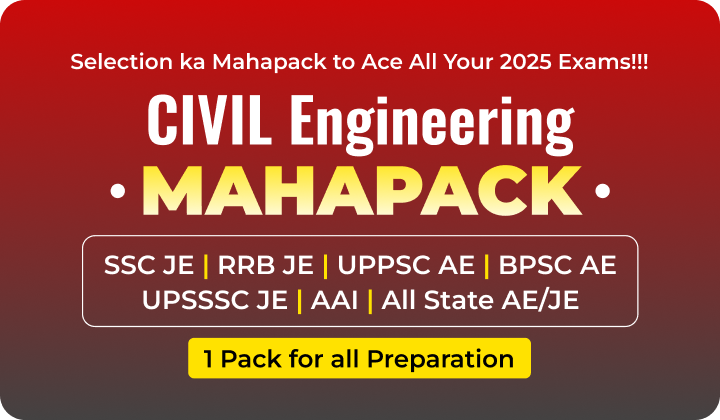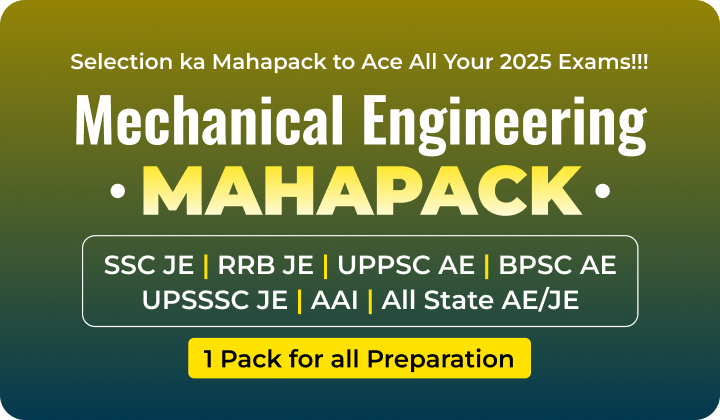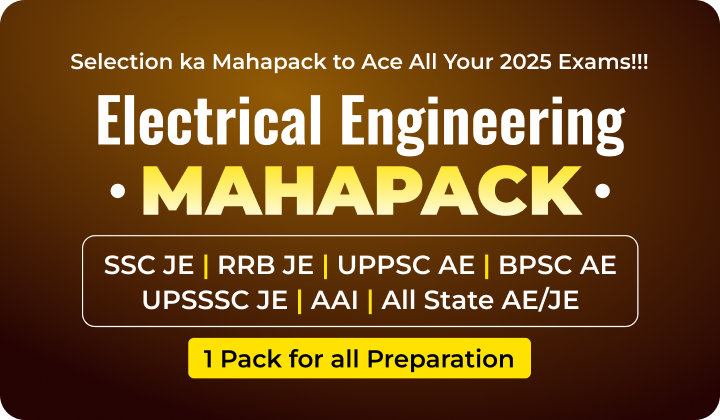Table of Contents
The Recruitment & Assessment Centre (RAC) will soon announce recruitment for the post of Scientist B in the Defence Research & Development Organization(DRDO). Those candidates who have completed their graduation should know the DRDO Scientist B Syllabus 2025 properly to make a proper study plan to ace the DRDO Scientist B Exam 2025.
In this article, we provided the detailed DRDO Scientist B Syllabus and DRDO Scientist B Exam Pattern 2025. The candidates should overview the DRDO Scientist B Syllabus & prepare accordingly to easily crack the DRDO Exam. Read the full article and bookmark this website for further Engineering Job Updates.
DRDO Scientist B Exam Pattern 2025
Before going to the DRDO Syllabus section, candidates must check the DRDO Scientist B Exam Pattern 2025 to get an idea of how many questions are asked & the distribution of marks in each paper. The key point related to the DRDO Scientist B Exam Pattern is given below:
- The Mode of the DRDO Scientist B Exam is Offline
- There will be a total 2 papers in the DRDO examination (Paper 1 & Paper 2)
- Each Question paper will be descriptive type.
- Both papers will be of 300 mark each.
- The total time duration for completing both papers is 6 hours.
The crux of the DRDO Scientist B Exam Pattern 2025 is given in the table below:
| DRDO Scientist B Exam Pattern | ||
| Paper | Duration | Marks |
| Paper 1 | 3 hours | 300 marks |
| Paper 2 | 3 hours | 300 marks |
| Total | 6 hours | 600 marks |
DRDO Scientist B Syllabus 2025 Detailed
Before preparing for the exam, the syllabus must be studied well so that the candidate gets an idea of which portion takes more time than other portions & has to manage the time accordingly. The DRDO Scientist B Syllabus 2025 is divided into 2 phases according to Paper 1 & Paper 2. Check the detailed DRDO Scientist B Syllabus for the various disciplines given below.
DRDO Scientist B Syllabus For Mechanical Engineering
DRDO Scientist B Syllabus (Paper 1 and Paper 2) For Mechanical Engineering is given in the table below for the proper understanding of the mechanical engineering aspirants.
| DRDO Scientist B Syllabus 2025 For ME | |
| Disciplines | Syllabus & Topics |
| Mechanical Engineering (Paper 1) |
Fluid Mechanics: Basic Concepts and Properties of Fluids, Manometry, Fluid Statics, Buoyancy, Equations of Motion, Bernoulli’s equation and applications, Viscous flow of incompressible fluids, Laminar and Turbulent flows, Flow through pipes and head losses in pipes. Thermodynamics and Heat transfer: Thermodynamic systems and processes; properties of pure substance; Zeroth, First and Second Laws of Thermodynamics; Entropy, Irreversibility and availability; analysis of thermodynamic cycles related to energy conversion: Rankine, Otto, Diesel and Dual Cycles; ideal and real gases; compressibility factor; Gas mixtures. Modes of heat transfer, Steady and unsteady heat conduction, Thermal resistance, Fins, Free and forced convection, Correlations for convective heat transfer, Radiative heat transfer – Radiation heat transfer co-efficient boiling and condensation, Heat exchanger performance analysis. IC Engines, Refrigeration and Air conditioning: SI and CI Engines, Engine Systems and Components, Performance characteristics and testing of IC Engines; Fuels; Emissions and Emission Control. Vapor compression refrigeration, Refrigerants and Working cycles, Compressors, Condensers, Evaporators, and Expansion devices, and Other types of refrigeration systems like Vapour Absorption, Vapour jet, thermoelectric, and Vortex tube refrigeration. Psychometric properties and processes, Comfort chart, Comfort and industrial air conditioning, Load calculations, and Heat pumps. Turbo Machinery: Reciprocating and Rotary pumps, Pelton wheel, Kaplan and Francis Turbines, velocity diagrams, Impulse and Reaction principles, Steam and Gas Turbines, Theory of Jet Propulsion – Pulse jet and Ram Jet Engines, Reciprocating and Rotary Compressors – Theory and Applications Power Plant Engineering: Rankine and Brayton cycles with regeneration and reheat, Fuels and their properties, Flue gas analysis, Boilers, steam turbines, and other power plant components like condensers, air ejectors, electrostatic precipitators and cooling towers – their theory and design, types and applications Renewable Sources of Energy: Solar Radiation, Solar Thermal Energy collection – Flat Plate and focusing collectors their materials and performance. Solar Thermal Energy Storage, Applications – heating, cooling, and Power Generation; Solar Photovoltaic Conversion; Harnessing of Wind Energy, Bio-mass and Tidal Energy – Methods and Applications, Working principles of Fuel Cells. |
| Mechanical Engineering (Paper 2) |
Engineering Mechanics: Analysis of System of Forces, Friction, Centroid and Centre of Gravity, Dynamics; Stresses and Strains-Compound Stresses and Strains, Bending Moment and Shear Force Diagrams, Theory of Bending Stresses- Slope and deflection-Torsion, Thin and thick Cylinders, Spheres. Engineering Materials: Basic Crystallography, Alloys and Phase diagrams, Heat Treatment, Ferrous and Non-Ferrous Metals, Non-metallic materials, Basics of Nano-materials, Mechanical Properties and Testing, Corrosion prevention, and control Mechanisms and Machines: Types of Kinematics Pair, Mobility, Inversions, Kinematic Analysis, Velocity and Acceleration Analysis of Planar Mechanisms, CAMs with uniform acceleration and retardation, cycloidal motion, oscillating followers; Vibrations –Free and forced vibration of undamped and damped SDOF systems, Transmissibility Ratio, Vibration Isolation, Critical Speed of Shafts. Gears – Geometry of tooth profiles, Law of gearing, Involute profile, Interference, Helical, Spiral and Worm Gears, Gear Trains- Simple, compound, and Epicyclic; Dynamic Analysis – Slider – crank mechanisms, turning moment computations, balancing of Revolving & Reciprocating masses, Gyroscopes –Effect of Gyroscopic couple on automobiles, ships and aircraft, Governors. Design of Machine Elements: Design for static and dynamic loading; failure theories; fatigue strength and the S-N diagram; principles of the design of machine elements such as riveted, welded, and bolted joints. Shafts, Spur gears, rolling and sliding contact bearings, Brakes and clutches, flywheels. Manufacturing, Industrial and Maintenance Engineering: Metal casting-Metal forming, Metal Joining, Machining, and machine tool operations, Limits, fits and tolerances, Metrology and inspection, computer Integrated manufacturing, FMS, Production planning and Control, Inventory control and operations research – CPM-PERT. Failure concepts and characteristics, Failure analysis, Machine Vibration, Data acquisition, Fault Detection, Vibration Monitoring, Field Balancing of Rotors, Noise Monitoring, Wear and Debris Analysis, Signature Analysis, NDT Techniques in Condition Monitoring. Mechatronics and Robotics: Microprocessors and Microcontrollers: Architecture, programming, I/O, Computer interfacing, Programmable logic controller. Sensors and actuators, Piezoelectric accelerometer, Hall effect sensor, Optical Encoder, Resolver, Inductosyn, Pneumatic and Hydraulic actuators, stepper motor, Control Systems- Mathematical modeling of Physical systems, control signals, controllability and observability. Robotics, Robot Classification, Robot Specification, notation; Direct and Inverse Kinematics; Homogeneous Coordinates and Arm Equation of four Axis SCARA Robot. |
DRDO Scientist B Syllabus For Computer Science
DRDO Scientist B Syllabus 2025 (Paper 1 and Paper 2) For Computer Science is tabulated below for helping out the Computer Science candidates.
| DRDO Scientist B Syllabus 2025 For CSE | |
| Disciplines | Syllabus & Topics |
| Computer Science & Engineering (Paper 1) | Engineering Mathematics
a. Linear Algebra: Matrices, Determinants, System of linear equations, eigenvalues and eigenvectors, LU decomposition, orthonormal bases, Transforms – Fourier, DCT, wavelets. b. Calculus: Limits, continuity, differentiability, maxima and minima, mean value theorem, integration. Vector calculus – gradient, divergence, curl, integral theorems. c. Probability: Random variables, probability distributions – uniform, normal, exponential, Poisson, binomial. Mean, median, mode, standard deviation. Conditional probability and Bayes theorem. Information theory: Shannon entropy, information, conditional information. Discrete Mathematics: Propositional and first-order logic. Sets, relations, functions, partial orders and lattices, groups. Graphs: connectivity, matching, coloring. Combinatorics: counting, recurrence relations, generating functions Digital Logic: Boolean algebra. Combinational and sequential circuits. Minimization. Number representation and computer arithmetic (fixed and floating-point). Computer Organization and Architecture: Machine instructions and addressing modes. Assembly language. ALU, data path, and control unit. Instruction pipelining. Memory hierarchy: cache, main memory, and secondary storage. I/O interface (interrupt and DMA modes). RISC, CISC, parallel architectures. Programming and Data Structures Programming in C: functions, structures, memory management, recursion, arrays, stacks, queues, linked lists, trees, binary search trees, binary heaps, and graphs. Object-oriented programming basics. Algorithms: Searching, sorting, hashing. Asymptotic worst case, time and space complexity. Algorithm design techniques: greedy, dynamic programming, and divide‐and‐conquer. Graph search, minimum spanning trees, shortest paths. |
| Computer Science & Engineering (Paper 2) |
Compiler design – Lexical analysis, parsing, syntax‐directed translation. Runtime environments, intermediate code generation. Operating System – Processes, threads, inter‐process communication, concurrency and synchronization, deadlocks. CPU scheduling. Memory management and virtual memory. File systems. Virtual machines and hypervisors. Secure operating systems. Theory of Computation – Regular expressions and finite automata. Context‐free grammars and push‐down automata. Regular and context‐free languages, pumping lemma. Turing machines and undecidability. Databases ER‐model – Relational model: relational algebra, tuple calculus, SQL. Integrity constraints. Normal forms. File organization, indexing (eg, B and B+ trees). Transactions and concurrency controls. Computer Networks – Concept of layering, OSI model. LAN technologies (Ethernet). Flow and error control techniques, switching. IPv4 / IPv6, routers, and routing algorithms (distance vector, link state). TCP/UDP and sockets, congestion control. Application layer protocols (DNS, SMTP, POP, FTP, HTTP). Basics of WiFi. Security of Cyber Systems – Cybersecurity principles, Kerberos, RADIUS, secure protocols (IPSec, SSH, SSL), basics of the public key and private key cryptography, hash functions, blockchains, digital signatures, and certificates. Firewalls, intrusion detection systems, basics of IoT security and Cloud security. Threats, vulnerabilities, malicious software. Attacks: buffer overflow, DoS, DDoS, SQL injection, web application attacks AI and Machine Learning – Classification and clustering techniques, dimensionality reduction: PCA, SVD. Correlation and regression analysis. Training and test data: overfitting, underfitting. Search. Ontology. Decision trees. Artificial Neural Networks: activation function, multi‐layer perceptron, deep learning. Application of artificial neural networks. |
DRDO Scientist B Syllabus 2025 For ECE
The ECE candidates can check the DRDO Scientist B Syllabus 2025 (Paper 1 and Paper 2) for Electronics & Communication Engineering through the table below:
| DRDO Scientist B Syllabus 2025 For ECE | |
| Disciplines | Syllabus & Topics |
| Electronics & Communication Engineering (Paper 1) |
Basic Electronics Engineering: Basics of semiconductors; Diode/Transistor basics and characteristics; Diodes for different uses; Junction & Field Effect Transistors (BJTs, JFETs, MOSFETs); Transistor amplifiers of different types, oscillators and other circuits; Basics of Integrated Circuits (ICs); Bipolar, MOS and CMOS ICs; Basics of linear ICs, operational amplifiers and their applications-linear/non-linear; Optical sources/detectors; Basics of Optoelectronics and its applications. Basic Electrical Engineering: DC circuits Ohm’s & Kirchoff’s laws, mesh and nodal analysis, circuit theorems; Electromagnetism, Faraday’s & Lenz’s laws, induced EMF and its uses; Single-phase AC circuits; Transformers, efficiency; Basics-DC machines, induction machines, and synchronous machines; Electrical power sources- basics: hydroelectric, thermal, nuclear, wind, solar; Basics of batteries and their uses. Materials Science: Electrical Engineering materials; Crystal structure & defects; Ceramic materials-structures, composites, processing and uses; Insulating laminates for electronics, structures, properties and uses; Magnetic materials, basics, classification, ferrites, Ferro/para-magnetic materials and components; Nano materials-basics, preparation, purification, sintering, nanoparticles and uses; Nano-optical/magnetic/electronic materials and uses; Superconductivity, uses. Electronic Measurements and Instrumentation: Principles of measurement, accuracy, precision and standards; Analog and Digital systems for measurement, measuring instruments for different applications; Static/dynamic characteristics of measurement systems, errors, statistical analysis, and curve fitting; Measurement systems for nonelectrical quantities; Basics of telemetry; Different types of transducers and displays; Data acquisition system basics. Network Theory: Network graphs & matrices; Wye-Delta transformation; Linear constant coefficient differential equations- time-domain analysis of RLC circuits; Solution of network equations using Laplace transforms- frequency domain analysis of RLC circuits; 2-port network parameters-driving point & transfer functions; State equations for networks; Steady state sinusoidal analysis. Analog and Digital Circuits: Small signal equivalent circuits of diodes, BJTS and FETs; Diode circuits for different uses; Biasing & stability of BJT & JFET amplifier circuits; Analysis/design of amplifier- single/multi-stage; Feedback& uses; Active filters, timers, multipliers, waveshaping, A/D-D/A converters; Boolean Algebra& uses; Logic gates, Digital IC families, Combinatorial/sequential circuits; Basics of multiplexers, counters/registers/ memories /microprocessors, design& applications. |
| Electronics & Communication Engineering (Paper 2) |
Analog and Digital Communication Systems: Random signals, noise, probability theory, information theory; Analog versus digital communication & applications: Systems- AM, FM, transmitters/receivers, theory/practice/ standards, SNR comparison; Digital communication basics: Sampling, quantizing, coding, PCM, DPCM, multiplexing-audio/video; Digital modulation: ASK, FSK, PSK; Multiple access: TDMA, FDMA, CDMA; Optical communication: fiber optics, theory, practice/standards. Control Systems: Classification of signals and systems; Application of signal and system theory; System realization; Transforms& their applications; Signal flow graphs, Routh-Hurwitz criteria, root loci, Nyquist/Bode plots; Feedback systems-open & close loop types, stability analysis, steady-state, transient and frequency response analysis; Design of control systems, compensators, elements of lead/lag compensation, PID and industrial controllers. Computer Organization and Architecture: Basic architecture, CPU, I/O organization, memory organization, peripheral devices, trends; Hardware /software issues; Data representation& Programming; Operating systems-basics, processes, characteristics, applications; Memory management, virtual memory, file systems, protection & security; Databases, different types, characteristics and design; Transactions and concurrency control; Elements of programming languages, typical examples. Electro Magnetics: Elements of vector calculus, Maxwell’s equations-basic concepts; Gauss’, Stokes’ theorems; Wave propagation through different media; Transmission Different types, basics, Smith’s chart, impedance matching/transformation, S-parameters, pulse excitation, uses; Waveguides-basics, rectangular types, modes, cut-off frequency, dispersion, dielectric types; Antennas-radiation pattern, monopoles/dipoles, gain, arrays-active/passive, theory, uses. Advanced Electronics Topics: VLSI technology: Processing, lithography, interconnects, packaging, testing; VLSI design: Principles, MUX/ROM/PLA-based design, Moore & Mealy circuit design; Pipeline concepts & functions; Design for testability, examples; DSP: Discrete-time signals/systems, uses; Digital filters: FIR/IIR types, design, speech/audio/radar signal processing uses; Microprocessors & microcontrollers, basics, interrupts, DMA, instruction sets, interfacing; Controllers & uses; Embedded systems. Advanced Communication Topics: Communication networks; Principles /practices /technologies /uses /OSI model/security; Basic packet multiplexed streams/scheduling; Cellular networks, types, analysis, protocols (TCP/TCPIP); Microwave & satellite communication: Terrestrial/space type LOS systems, block schematics link calculations, system design; Communication satellites, orbits, characteristics, systems, use; Fibre optic communication systems, block schematics, link calculations, system design. |


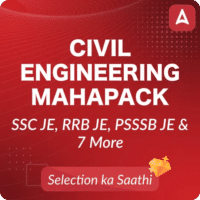

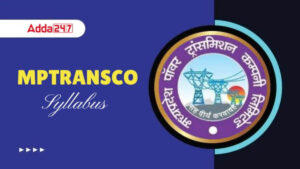 MPPTCL Syllabus 2025 & Exam Pattern,...
MPPTCL Syllabus 2025 & Exam Pattern,...
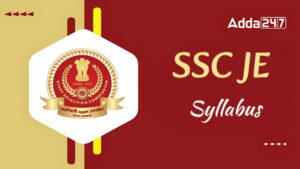 SSC JE Syllabus 2025 for Tier 1 and Tier...
SSC JE Syllabus 2025 for Tier 1 and Tier...
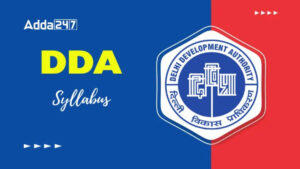 DDA JE Syllabus 2025 and Exam Pattern, D...
DDA JE Syllabus 2025 and Exam Pattern, D...

